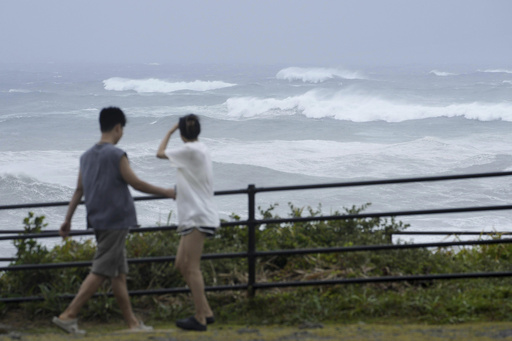
A formidable typhoon that struck the Tokyo region with intense rainfall and prompted mudslide alerts in northern Japan has now moved eastward into the Pacific Ocean away from the coastline on Saturday. The storm caused no significant damage, and Tokyo and neighboring areas had returned to normalcy with clear skies. Bullet trains, which had temporarily stopped services between Tokyo and Nagoya, have resumed operations, albeit with some delays, transporting stranded passengers.
Although the situation has improved, there are still some lingering effects from the typhoon. Certain local train services remain disrupted, and numerous airline flights are still canceled. The Japan Meteorological Agency reported that Typhoon Ampil was traveling away from Japan’s eastern coast at a speed of 20 kph (12 mph) with sustained winds of 162 kph (101 mph). Ampil did not make landfall and passed closest to Japan after midnight.
During the Bon summer holidays in Japan, the transportation disturbances occurred, affecting daily routines for many residents. While power has been restored in over 5,000 households, approximately 250 homes in Ibaraki and Tochigi prefectures, northeast of Tokyo, are still without electricity. The aftermath of the typhoon includes toppled signboards, trees, bicycles, and poles along with some beaches remaining closed for swimming due to hazardous sea conditions and strong winds.
The city of Iwaki in Fukushima prefecture has lifted evacuation orders for more than 320,000 residents, and Tokyo’s Disneyland has reopened after an early closure on Friday. Delivery services through Yamato Transport, including Amazon and other deliveries in Japan, have resumed in the Tokyo area but have encountered delays, with some services temporarily halted in northern Japan.
Residents are advised to exercise caution as the threat of fragile buildings collapsing and potential landslides still looms, particularly in northern Japan where heavy rains and thunderstorms persist. Additionally, weather forecasters are warning of extremely high temperatures following the storm, with temperatures expected to reach up to 38 degrees Celsius (100 degrees Fahrenheit) in the Tokyo area. The public is urged to stay hydrated and take necessary precautions to combat the heat.
